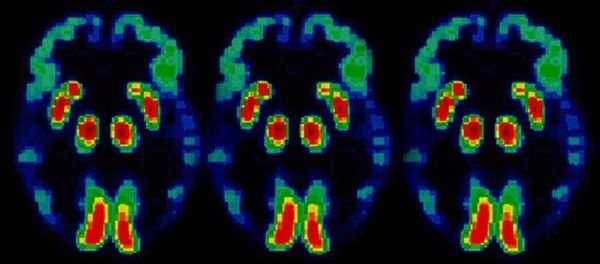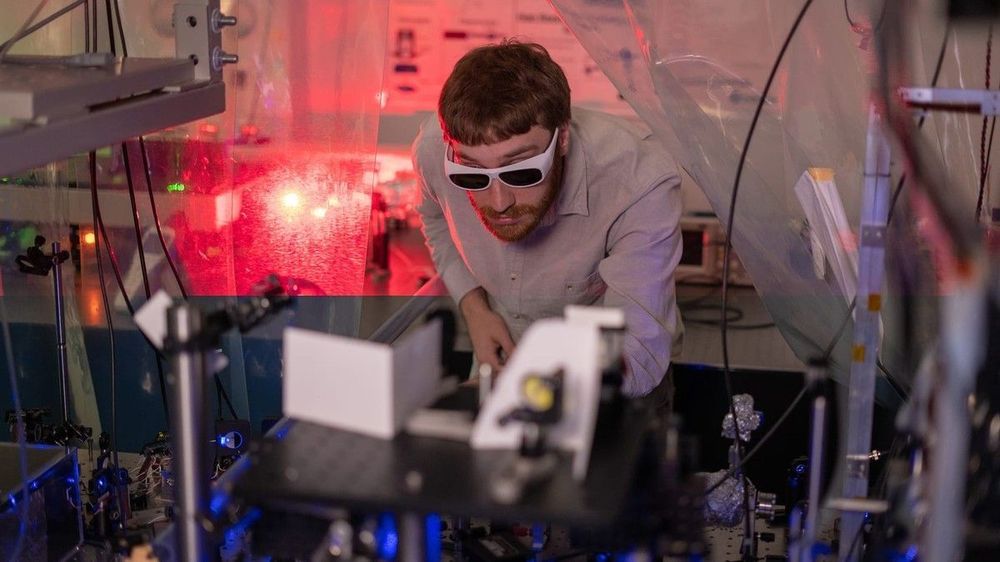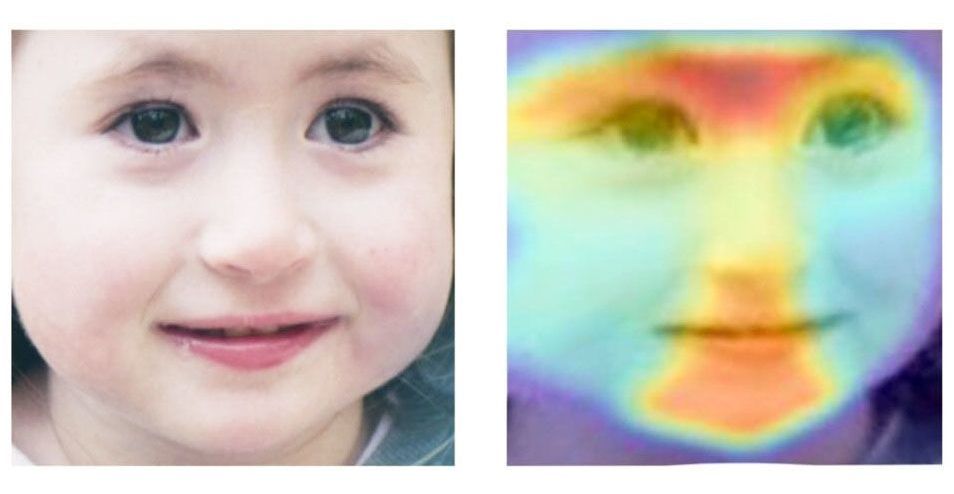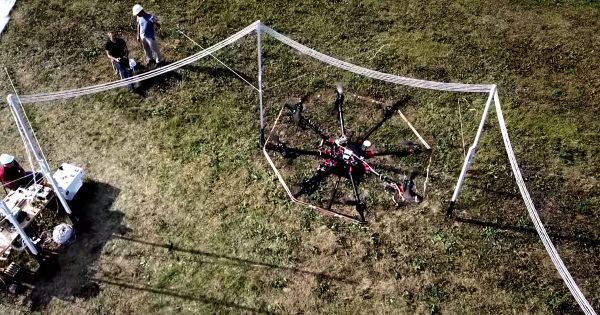Page 9225
Jan 7, 2019
New Drug Trial Could Halt Alzheimer’s Memory Loss
Posted by Genevieve Klien in categories: biotech/medical, neuroscience
Jan 7, 2019
Scientists Made Plasma That Is 50 Times Colder Than Deep Space
Posted by Genevieve Klien in category: space
Scientists have created a laser-cooled neutral plasma for the first time that will be used to simulate some of the hottest and most exotic matter in the universe.
Jan 7, 2019
Scientists could engineer a spicy tomato. Is it worth it?
Posted by Genevieve Klien in categories: bioengineering, biotech/medical, food, genetics
Spicy food is popular the world over, but the active ingredient that makes food taste “hot”—capsaicinoids, a group of chemical compounds has useful properties beyond making food taste delicious. However, the plants that make them (the chili pepper family, or Capsicum) are small and have relatively low yields. A new paper published today in the journal Trends in Plant Science proposes an alternative: engineering tomato plants to produce capsaicinoids. If all goes well, someday, you could enjoy a spicy tomato, or even be treated with capsaicinoids extracted from one.
The paper, written by a group at Brazil’s Federal University of Viçosa, builds on recent work that showed the tomato has all the genetic information it needs to produce capsaicinoids. “We know that all the genes are there, but in the tomato they are silent,” study author Agustin Zsӧgӧn says. His paper proposes a method for using gene-editing techniques to activate the genetic machinery in the tomato that tells it how to produce capsaicinoids, transforming the plant into both a “biofactory” that could produce larger amounts of the chemicals than it’s currently possible to grow and a spicy snack.
Tomatoes have capsaicinoid genetic pathways like peppers because the two South American plants are related. “In our lab, we work with both species,” Zsӧgӧn says. Last year, his team used gene editing to “domesticate” a wild tomato in just a few generations, engineering the strain to produce larger fruit, and greater quantities of it, than in the wild. This kind of process is how we ended up with the crops we eat today—early farmers planted the offspring of the most fruitful plants of each generation, enabling their genetic survival. CRISPR-Cas9 is just a shortcut.
Jan 7, 2019
Artificial intelligence could diagnose rare disorders using just a photo of a face
Posted by Genevieve Klien in category: robotics/AI
Jan 7, 2019
Conservation: How China is creating Edens
Posted by Genevieve Klien in categories: business, futurism
China is the future of global conservation, according to Sir Tim Smit, the maverick businessman and environmentalist who created the Eden Project.
Jan 7, 2019
UNSW claims demonstration of 3D atomic-scale quantum chip architecture
Posted by Genevieve Klien in categories: computing, quantum physics
The 3D architecture is touted as a major step in the development of a blueprint to build a large-scale quantum computer.
Jan 7, 2019
Wireless Charging Tech Lets Drones Stay Aloft Indefinitely
Posted by Genevieve Klien in categories: drones, energy
Jan 7, 2019
Intraoperative detection of blood vessels with an imaging needle during neurosurgery in humans
Posted by James Christian Smith in categories: biotech/medical, neuroscience
Intracranial hemorrhage can be a devastating complication associated with needle biopsies of the brain. Hemorrhage can occur to vessels located adjacent to the biopsy needle as tissue is aspirated into the needle and removed. No intraoperative technology exists to reliably identify blood vessels that are at risk of damage. To address this problem, we developed an “imaging needle” that can visualize nearby blood vessels in real time. The imaging needle contains a miniaturized optical coherence tomography probe that allows differentiation of blood flow and tissue. In 11 patients, we were able to intraoperatively detect blood vessels (diameter, 500 μm) with a sensitivity of 91.2% and a specificity of 97.7%. This is the first reported use of an optical coherence tomography needle probe in human brain in vivo. These results suggest that imaging needles may serve as a valuable tool in a range of neurosurgical needle interventions.
Stereotactic brain biopsies are a minimally invasive procedure used to obtain samples of intracranial tissue for diagnostic purposes, most commonly related to brain tumors. Approximately 80,000 new cases of primary brain tumor are diagnosed, and 14,000 brain biopsies are performed each year in the United States (1, 2). Hemorrhage is the most frequent and devastating complication associated with this procedure. Perioperative hemorrhage is associated with rates of transient and permanent morbidity of 1.7 to 8.5% and 1.4 to 4.8%, respectively, and mortality rates of 0.6 to 2.8% (3–7).
The standard clinical practice is to identify blood vessels at risk of injury on preoperative imaging, using either contrast-enhanced magnetic resonance imaging (MRI) or x-ray computed tomography. Frameless stereotactic navigation techniques, guided by preoperative imaging, are then used to direct the biopsy needle trajectory to sample the target lesion, while avoiding vasculature or eloquent brain tissue (8).
Jan 7, 2019
Researchers discover new drug cocktail that increases human beta cell proliferation at rapid rates
Posted by James Christian Smith in category: biotech/medical
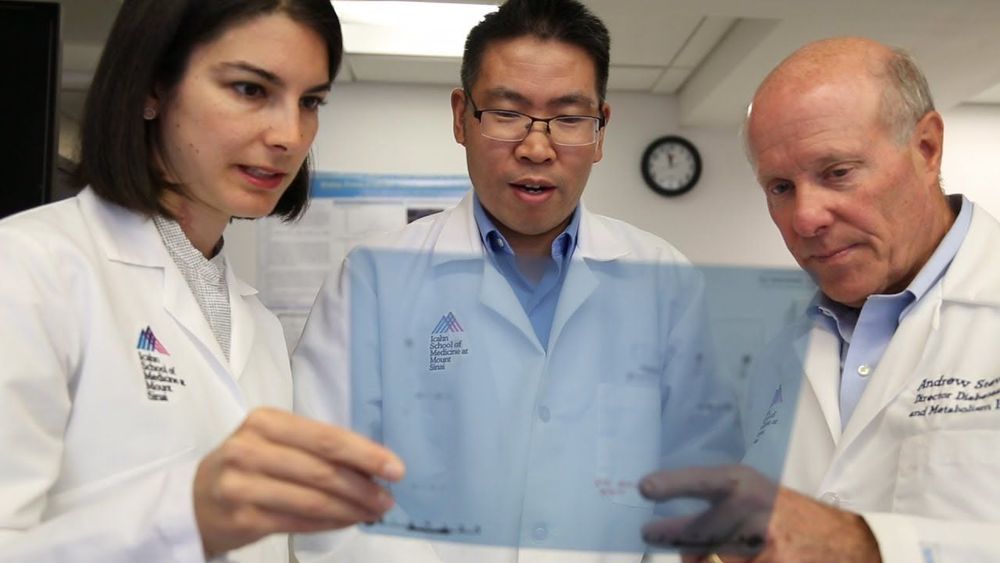
#EndOfDiabetes
Researchers at the Icahn School of Medicine at Mount Sinai have discovered a novel combination of two classes of drugs that induces the highest rate of proliferation ever observed in adult human beta cells—the cells in the pancreas that produce insulin. The result is an important step toward a diabetes treatment that restores the body’s ability to produce insulin.

